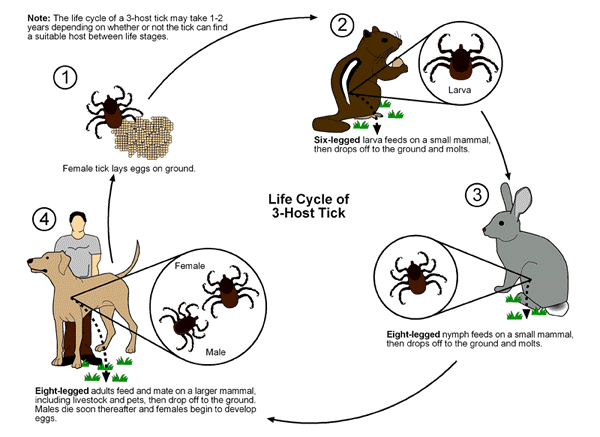It’s just the beginning of prime tick season. Truth be told, you can experience a bite from these nasty parasites pretty much year-round, but in the spring and summer months as we are outdoors frequently, the chances of a tick on you or your pet increases substantially.

I can attest. Just last week, in a matter of days, we found two ticks on our Yellow Lab, two on my husband, and one on myself (after a day of gardening). It’s impossible to know exactly when and where the bites took place, but it is disturbing, regardless.
We go through tick scares annually, but this year thus far seems to be far worse. I did a bit of casual research, with interesting results.
Turns out, Delaware Natural Resources and Environmental Control (DNRC) has not only a web page dedicated to identifying Delaware ticks, but also a comprehensive “Tick Program,” And they ask residents for help with their ongoing research. Anyone who experiences a tick bite, or even a live tick that hasn’t put down roots yet can file a Tick Interaction Form to report encounters and, weirdly, submit photos of the perpetrators.
DNREC wants your photos so their tick biologists can track tick infestations and screen for possible pathogens that can cause you, your dog, cat or local livestock tick-borne infections. They even encourage keeping the said villains in a Ziploc bag or glass jar in your freezer. This may also sound strange, but makes sense, because veterinarians or tick biologists may be able to determine which kind of tick caused infection, such as Lyme disease.
Out of curiosity after our five known tick bites last week, I submitted my interaction report, albeit without photos. Personally, my instinct in each case is to flush the menace away as soon as possible.
Within a day of filing my report, I received a lengthy email from Ashley, a DNREC tick biologist with a doctorate and board certification in Entomology (the study of insects). She seemed slightly disappointed I didn’t have any photographs, but she did offer a brief study on ticks and what to do to prevent them. Believe me, there’s a lot to learn.
Turns out, Delaware has five tick species that can cause harm to humans or our pets. Four of them reside in Sussex; the fifth is much more prevalent in Kent and New Castle Counties. Summarily, the most common culprits are the Lonestar and Blacklegged ticks (formerly known as “deer tick”).

Interestingly, we need to be wary of ticks throughout the year, even winter, depending on the tick species. For example, the Lonestar is most common in the spring and fall, while the Blacklegged finds us in the fall, winter and early spring. The three phases of a tick’s life are larva, nymph and adult. Only adult ticks bite humans and pets, while other ticks get piggyback rides as larva and nymphs on birds and small rodents.
That would make a good Jeopardy question.
DNREC offers a website page on protecting yourself and your family from ticks, both around your home and anywhere outdoors in Delaware’s diverse topography. You can learn what to do if you are bitten, and what kinds of repellents are most effective.
There are also resources for identifying symptoms of illness that may have been caused by a tick bite. Blood testing can be done for Lyme, as well as “alpha-gal syndrome,” in which a person oddly and suddenly develops an allergy to any mammalian meat, such as beef or lamb (ouch!).
Unfortunately, according to DNREC, Delaware has the highest incidence of Lyme disease in the nation. I was also dismayed to learn that it can take as little as 15 minutes for pathogens to be transmitted.
DNREC’s tick program was formed to study those pathogens, and areas of infestation in Delaware’s various environments. Ticks of different species are in our wetlands, our forests, our meadows with tall grasses, and our own back yards. DNREC offers landscaping tips for tick prevention.
Be sure to check out “The Tick Guy.” Dr. Thomas Mather is a University of Rhode Island entomologist with a mission to educate people about ticks – with an entertaining twist. He has several YouTube tutorials on tick prevention, tick myths and tick treatments.
He is also a proponent of treating clothing with permethrin spray, especially shoes and socks. A tick, as he explains, travels up, starting with your shoes and socks. Ticks do not fall out of trees or jump, as some urban legends claim.
Permethrin spray is widely available, but there are precautions about how to apply it safely. For example, if you are treating your shoes and clothing, he advises doing so outdoors, and drying completely before use.
A company named Insect Shield takes it a step further. They will treat your clothes with permethrin for you and also offer a decent selection of pre-treated clothing they claim lasts for 75 washes.
All of this is daunting information to process, when all you want to do is enjoy a walk in the woods or throw a ball for your dog. However, armed with preventive measures and vigilant “tick checks,” DNREC encourages all of us to enjoy Delaware’s verdant outdoors.
Stay safe out there.
By Bridget FitzPatrick
